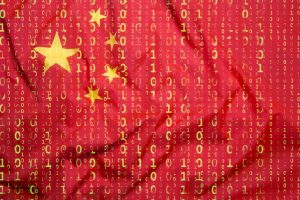On April 26, Professor Sun Ninghui, a preeminent expert in computer system architecture and an academician at the Chinese Academy of Engineering, delivered a pivotal lecture titled “The Development of Artificial Intelligence and Intelligent Computing” to the Standing Committee of the National People’s Congress. Despite limited coverage from Chinese media, the full text of the speech, published online, provided a rare and revealing look into Beijing’s AI ambitions.
Born in 1968 in Shanghai, Sun Ninghui has been a linchpin in China’s technological landscape. His career includes directing the National Intelligent Computer Research and Development Center and serving as the dean of the School of Computer Science and Technology at the University of Chinese Academy of Sciences.
Sun’s lecture was more than an academic exercise; it was a strategic blueprint of China’s AI ambitions and anxieties. He highlighted AI’s dual-edged nature, pointing out its potential for remarkable technological advancements while also spotlighting the security risks, particularly regarding politically sensitive information. AI-generated deepfakes, fraudulent news from tools like ChatGPT, and the proliferation of fake news sites underscore AI’s potential to erode social trust. For Beijing, these are not mere technical glitches but strategic vulnerabilities the leadership is keen to neutralize.
Sun’s focus on AI’s ability to churn out politically sensitive or “incorrect” information was striking. He stressed that the AI landscape is riddled with factual inaccuracies, inherent biases, and ease of manipulation – ripe for exploitation by adversaries. This concern is particularly acute for China, driven by the government’s obsession with controlling politically sensitive content. Beijing has rolled out stringent regulations to ensure AI development stays within state-approved boundaries.
The tech rivalry with the United States was another focal point in Sun’s lecture. With superior talent, foundational algorithms, and computational power, the U.S. holds a commanding lead in AI. China’s current role as a fast follower is a status quo that Beijing is desperate to disrupt.
U.S.-imposed restrictions on high-performance computing products and advanced semiconductor technologies are significant obstacles, argued Sun. The ban on advanced chips like the A100 and H100 stymies China’s AI progress, highlighting the strategic chokehold the United States maintains over China’s tech aspirations. This impact is particularly harsh for companies like Huawei and SMIC. Sun proposed that China innovate indigenously and diversify supply chains to reduce dependency on U.S. technology, echoing Beijing’s call to safeguard its high-tech future.
Sun’s critique of China’s underdeveloped domestic AI ecosystem was particularly revealing. Compared to NVIDIA’s expansive CUDA ecosystem, China’s AI development tools and talent pool are still embryonic, underscoring the urgent need for a cohesive, integrated approach to building a competitive AI ecosystem. The lack of synergy across AI tech layers – from applications to hardware – poses a significant challenge that Beijing is determined to overcome. To this end, China’s leaders must commit to enriching the AI ecosystem through substantial investments and strategic initiatives, Sun emphasized.
He outlined three strategic pathways for China’s AI development. The first involves aligning with U.S.-led systems, a practical but restrictive path given current geopolitical tensions. The second is building a closed, proprietary system, suitable for specific sectors like the military or judiciary but limited in scalability and global reach. The third and most promising pathway, according to Sun, is embracing an open-source model through global collaboration initiatives like RISC-V. By championing a collaborative global ecosystem, China should dismantle existing monopolies and lower entry barriers for domestic enterprises. This third pathway aligns with Beijing’s vision of becoming a global tech standard-setter and innovation leader.
Investing in new infrastructure is another cornerstone of China’s proposed AI strategy. Emphasizing the importance of robust data and computational infrastructure, Sun’s vision includes establishing national data hubs, developing foundational AI models, and integrating computational resources nationwide. The goal is to transform data into a strategic national asset, making AI services as accessible and affordable as utilities like water and electricity. This strategy underscores Beijing’s belief that a strong infrastructure backbone is essential for sustaining growth, whether traditional or AI-driven.
A significant departure from the United States’ approach to AI is China’s focus on the real economy, not just AI for AI’s sake. While the U.S. predominantly drives AI innovation in virtual sectors like software and internet services, China seeks to enhance its manufacturing prowess through AI integration. Deploying AI in traditional industries such as manufacturing and pharmaceuticals while fostering innovation in emerging fields is imperative, Sun emphasized. This practical strategy ensures AI not only drives economic growth but also fortifies China’s industrial base, maintaining its global competitiveness.
Despite Sun’s confidence and grand vision, Beijing’s AI ambitions are not without significant caveats. The government’s stringent control over politically sensitive content might stifle innovation and limit the potential for open scientific discourse. The heavy reliance on state-approved values for AI development raises questions about the ethical implications and potential misuse of AI technologies. Moreover, while the strategy to circumvent U.S. restrictions through indigenous innovation has merit, it remains to be seen whether China can achieve the necessary technological breakthroughs amid ongoing global competition.
Sun’s lecture was more than an informative session for China’s legislators. It should be seen as a strategic manifesto as Beijing is eager to craft a comprehensive and forward-looking AI strategy. This rare glimpse into the top leadership’s thinking offers a sharp, critical perspective on how China plans to harness AI to maintain its competitive edge in the high-stakes tech arena.
































